Where the sea slowly swallows the city
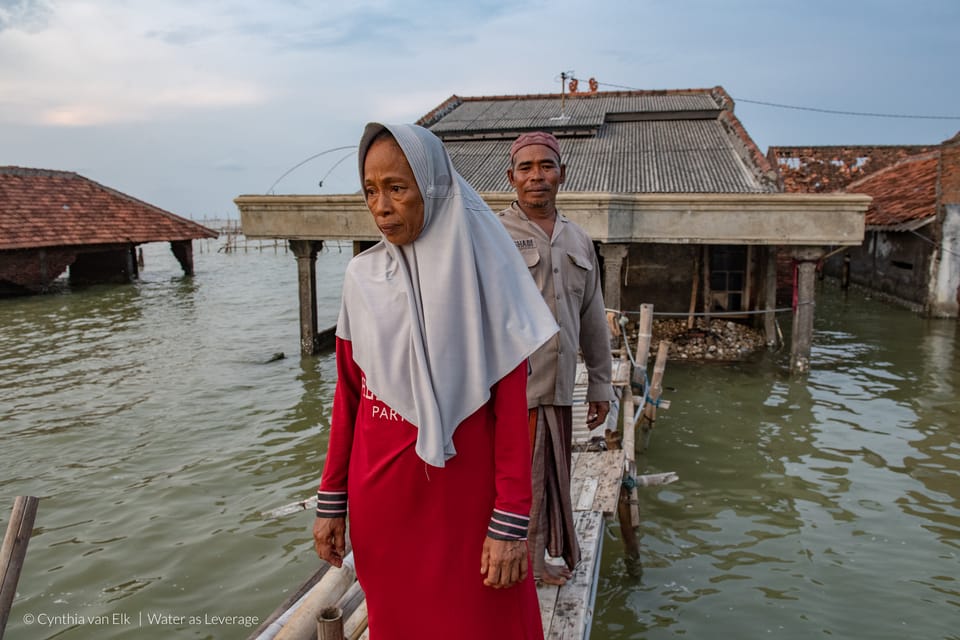
Rapid growth of industries and poor planning are causing land subsidence and flooding in Semarang and its surrounds in Indonesia. Cynthia van Elk finds the coast shrinking due to climate-induced sea level rise, erosion and loss of mangroves. The advancing sea is forcing coastal inhabitants to live in sinking houses.
Semarang, a mid-size city of 1,5 million people, is located on the northern coast of the island of Java, Indonesia. It is one of the three Asian cities selected for Water as Leverage, a program spearheaded by Henk Ovink, the Dutch Special Envoy for International Water Affairs. Water as Leverage aims to address water challenges in urban areas. And Semarang has many to tackle.
Since the mid-nineties, increasing number of industries along the Semarang coast have been depleting the aquifer. Excessive ground water extraction, and natural compaction of young alluvium soil, due partially to the heavy load of buildings and construction, caused the land to subside.
In some areas the subsidence rates are 8-15 cm per year. Combined with a sea level rise of about 6 mm per year, disappearing mangroves and large-scale erosion, Semarang and its surrounds are highly prone to disasters.
Semarang is a bustling city where it is not obvious that there are issues in the water drain system, except during monsoon. Heavy rainfalls result in flash floods that severely inundate parts of the city, making roads difficult to navigate, resulting in long traffic jams.
Heavy rainfalls result in flash floods
In the neighbouring region of Demak, problems of land subsidence and flooding are very visible. Construction is going on as far as the eye can see. Cement is being mixed everywhere, either by machine or by hand. Roads are being elevated. Houses and mosques too.
The race against subsidence and flooding is tight and never ending. In some places small sea walls are built with rocks, to safeguard the houses along the coast against storm surges.
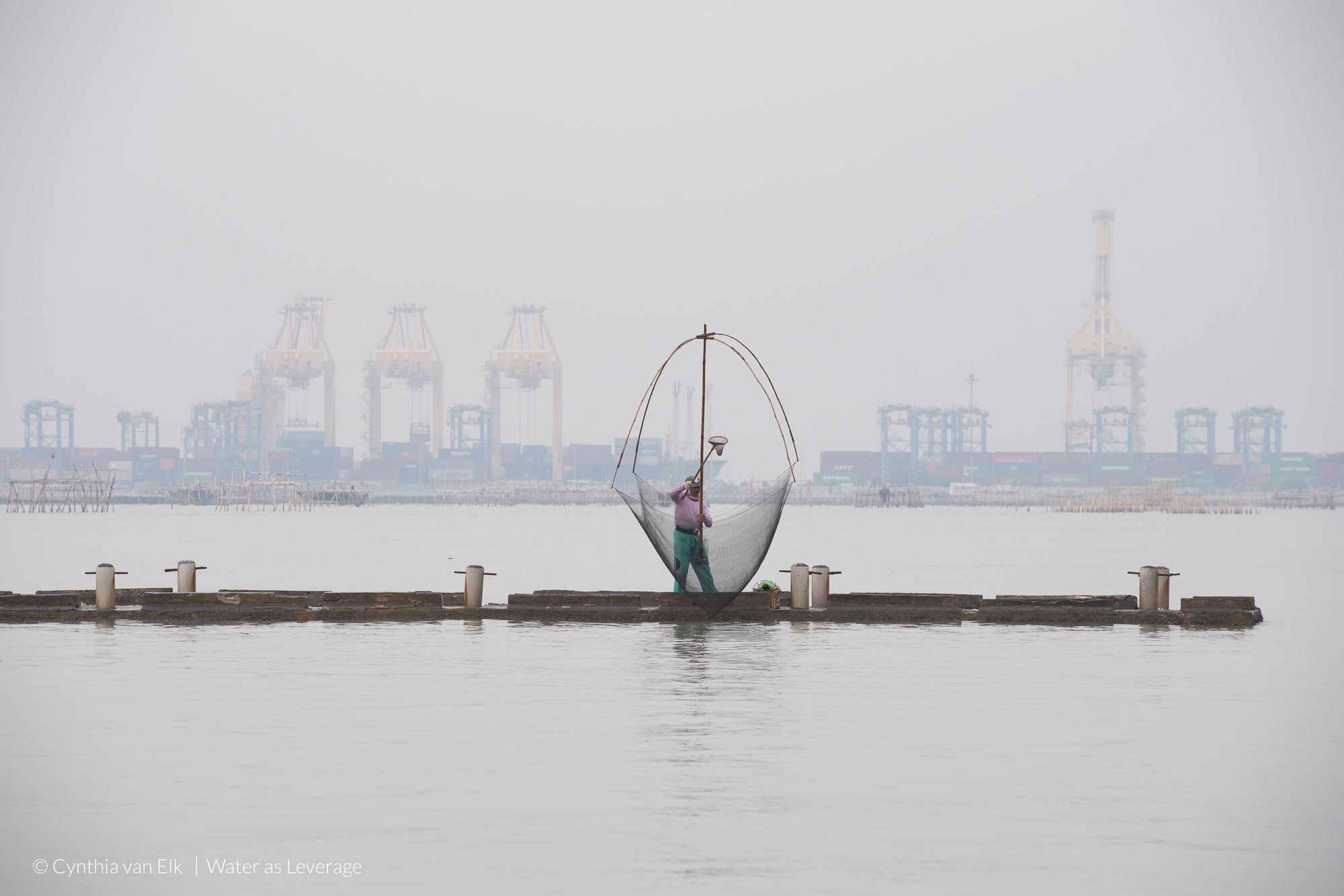
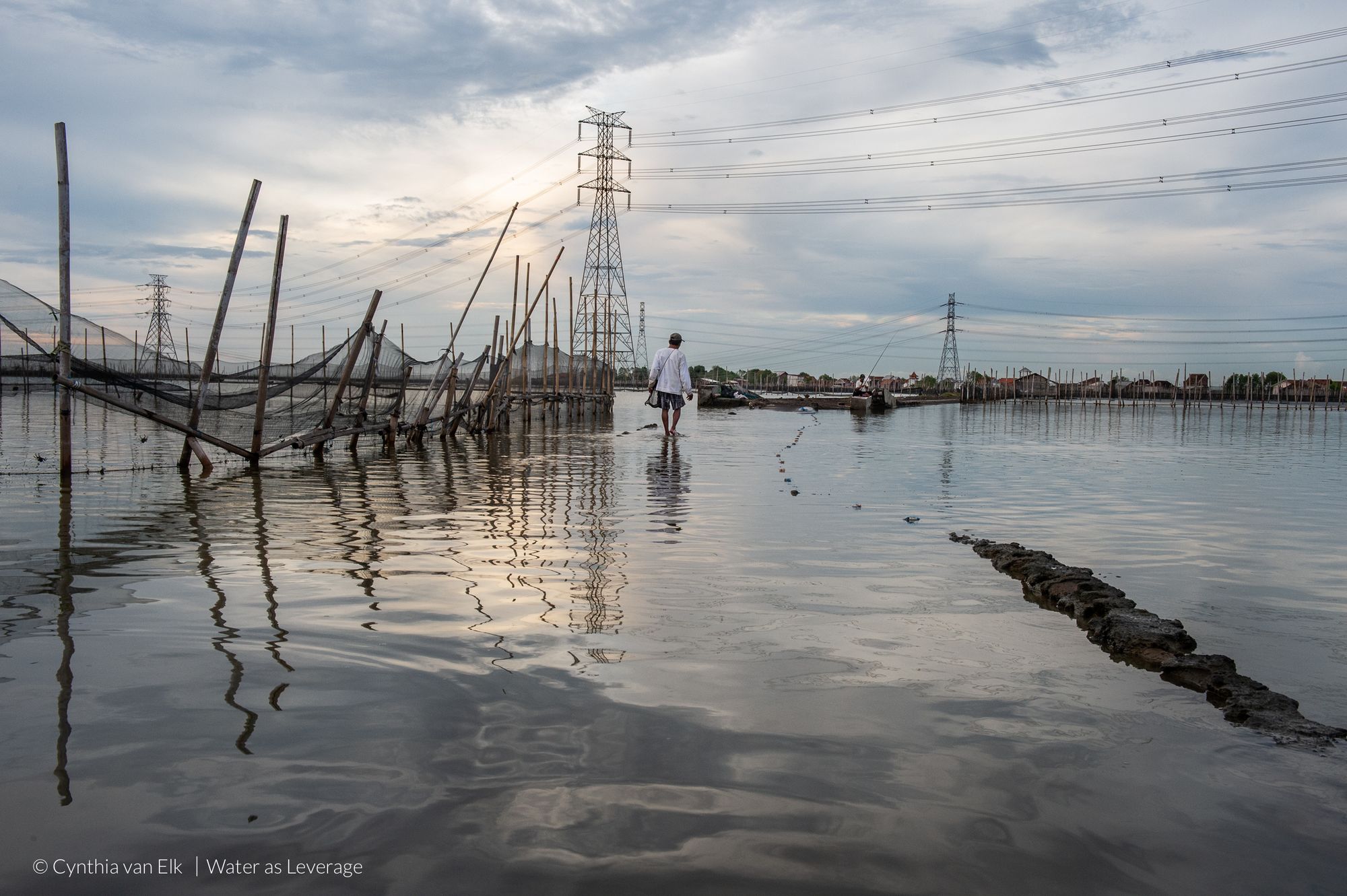
Left: a fisherman pulling out his net. Right: a fisherman wades through the water over what used to be a road. Photo: Cynthia van Elk/Water as Leverage
Driven out by the sea
Along the shore, houses stand deserted, since some residents have left already. Others have a narrow walkway made with long bamboo poles, leading over the water to the entrance door. For them, moving is not an option. Their sinking houses have lost their value, and hence have become unsellable. Without money for a new house people have no choice but to stay and make do.
For 5 to 6 months a year these residents live in homes that get flooded during high tide. They cook, eat, sleep, pray, watch TV, rest, gather and celebrate holidays together, with water reaching up to their knees inside their houses.

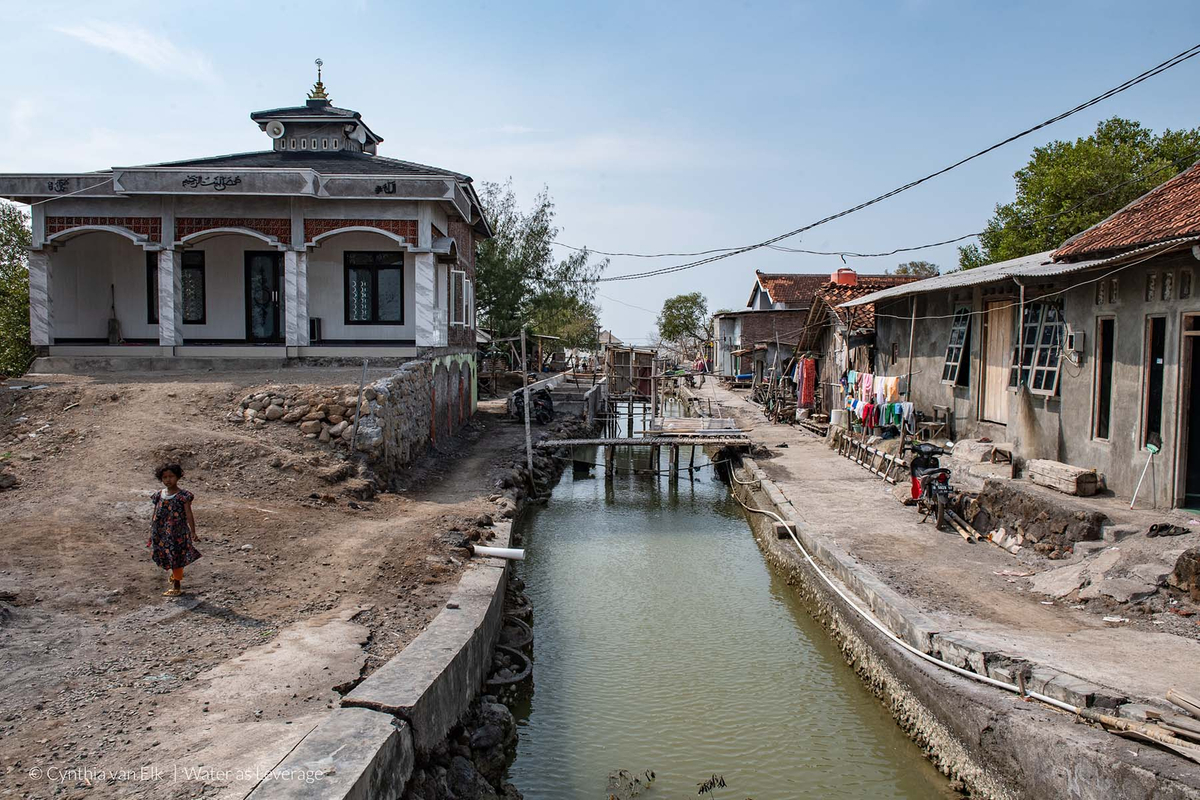
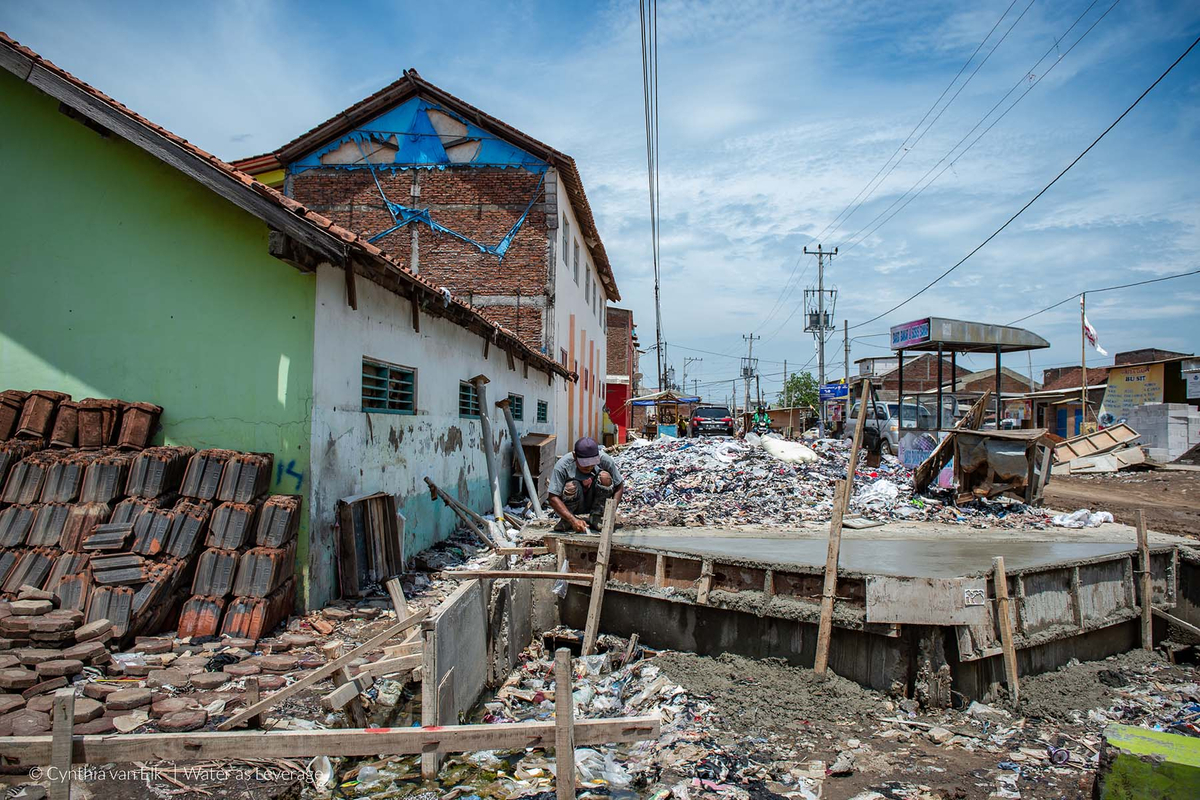
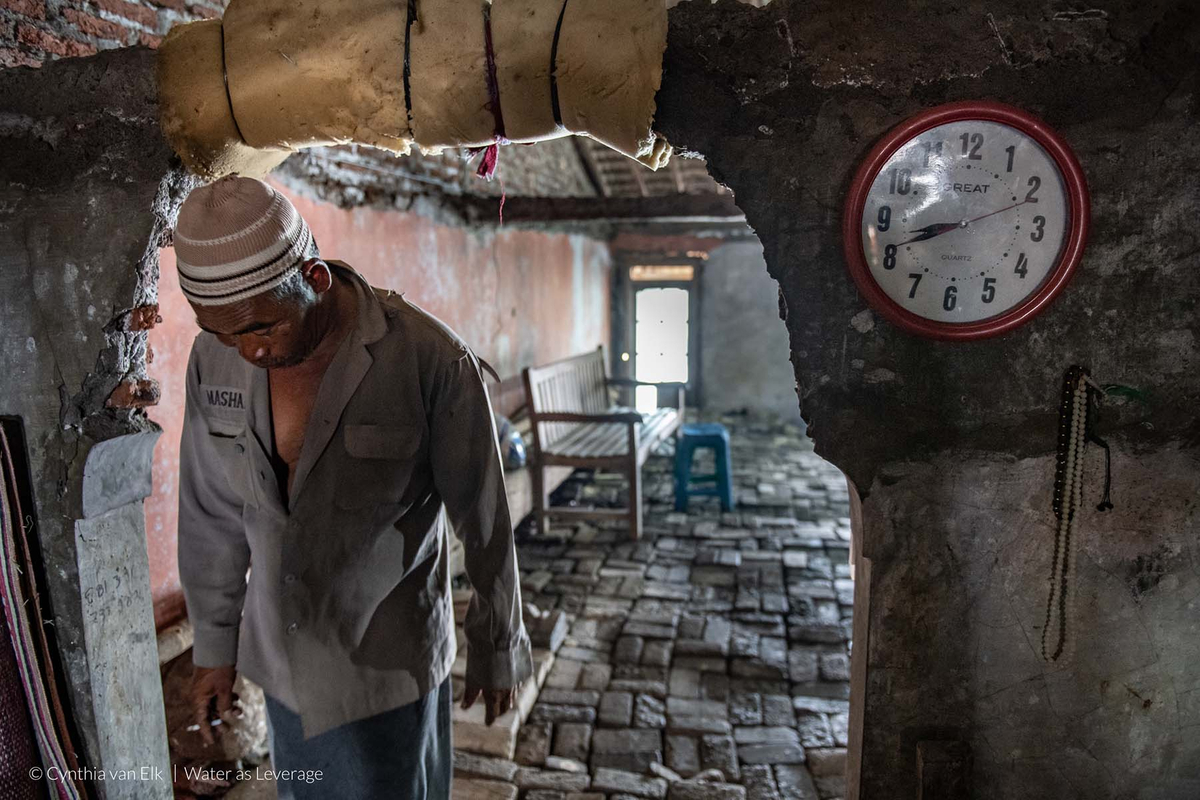
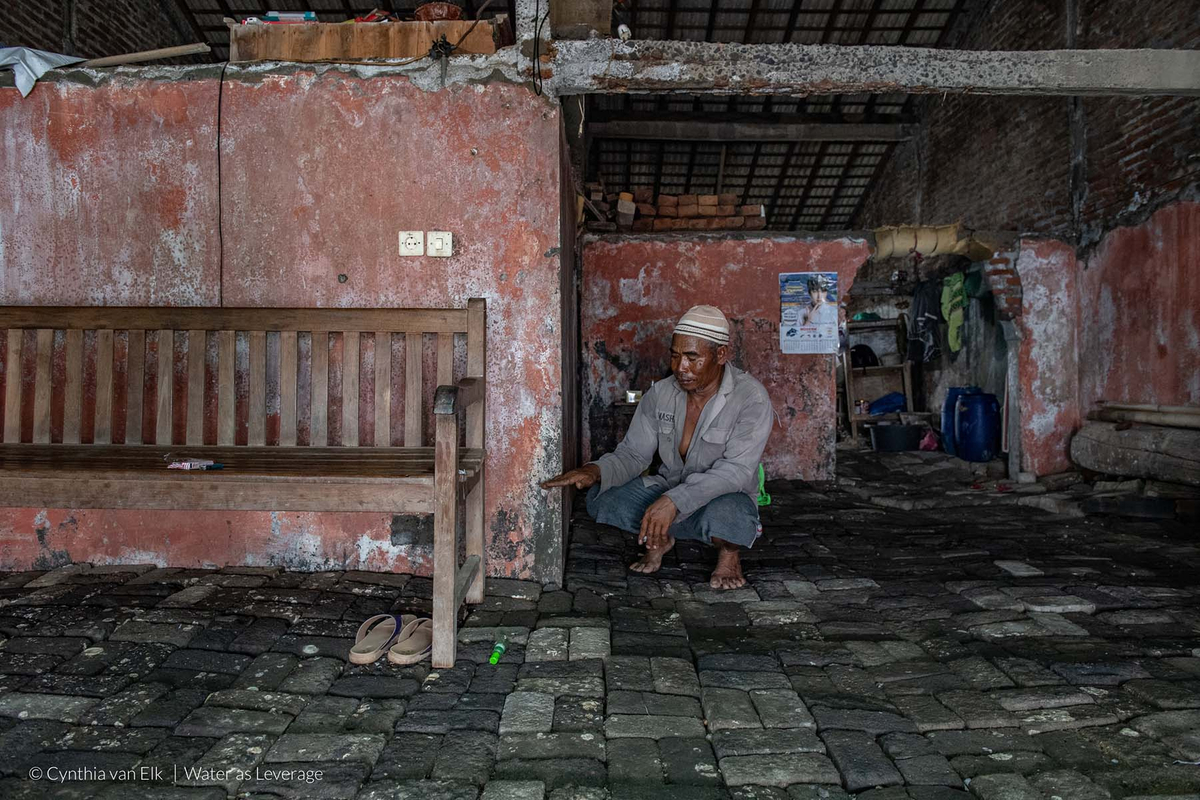
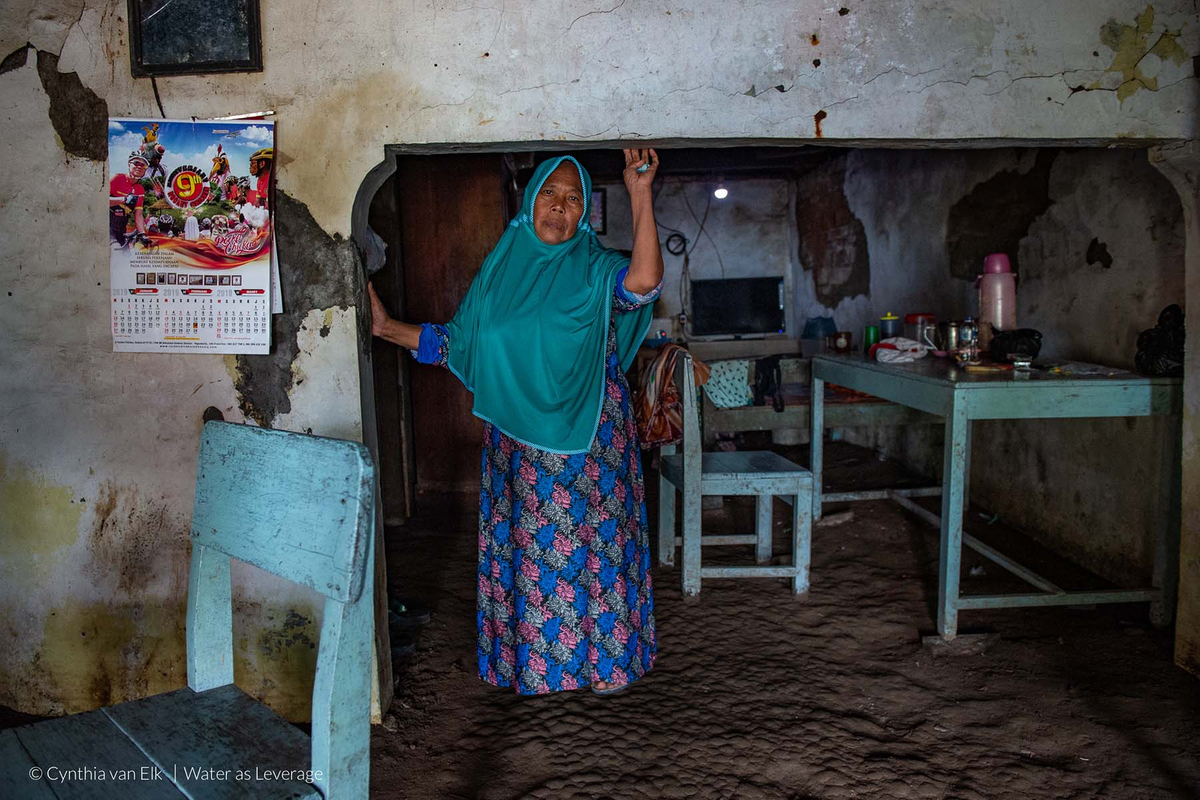
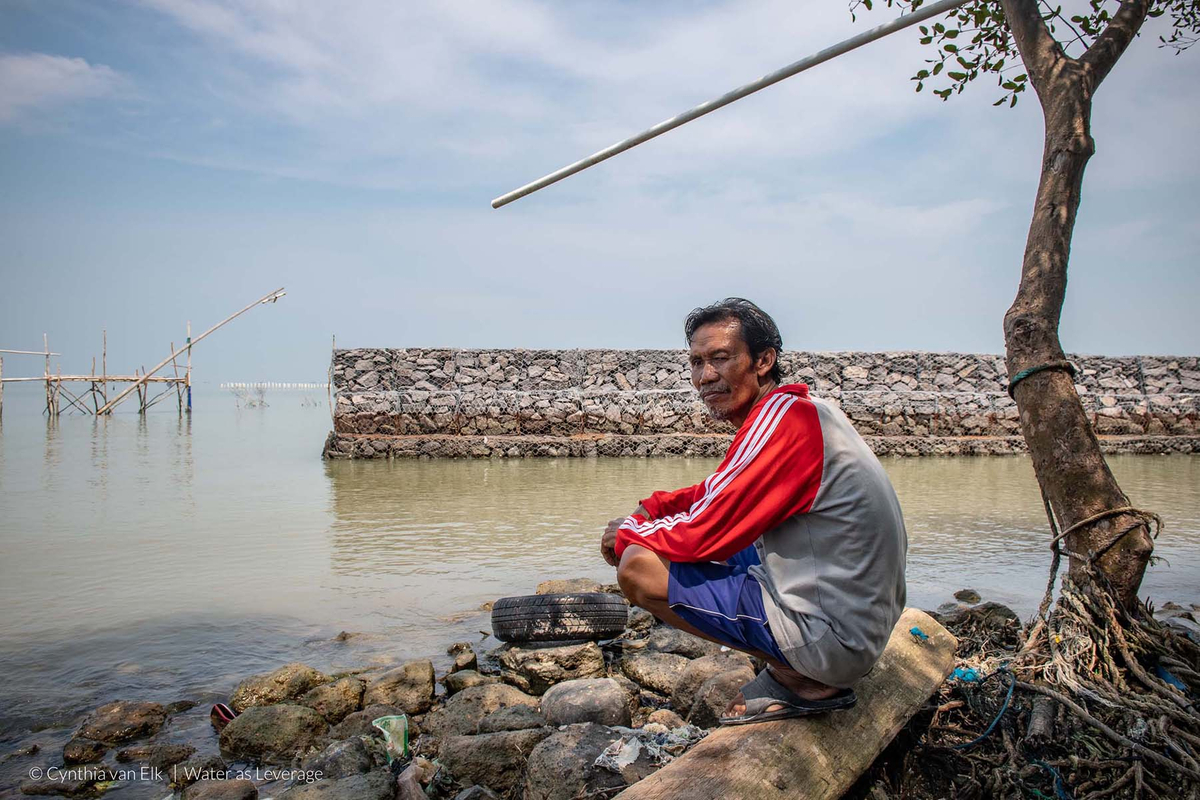
The sea slowly took over the land. Since 1994 the coastline has retreated over 3km. It was a slow process, the villagers told me, that started about 15 years ago. The sea gradually came closer. Their once productive agricultural land became submerged. Fish and shrimp ponds were created, and that is how they made a living.
Today all that land is now ocean; the farmers had no choice but to adapt, and so they have become fishermen.
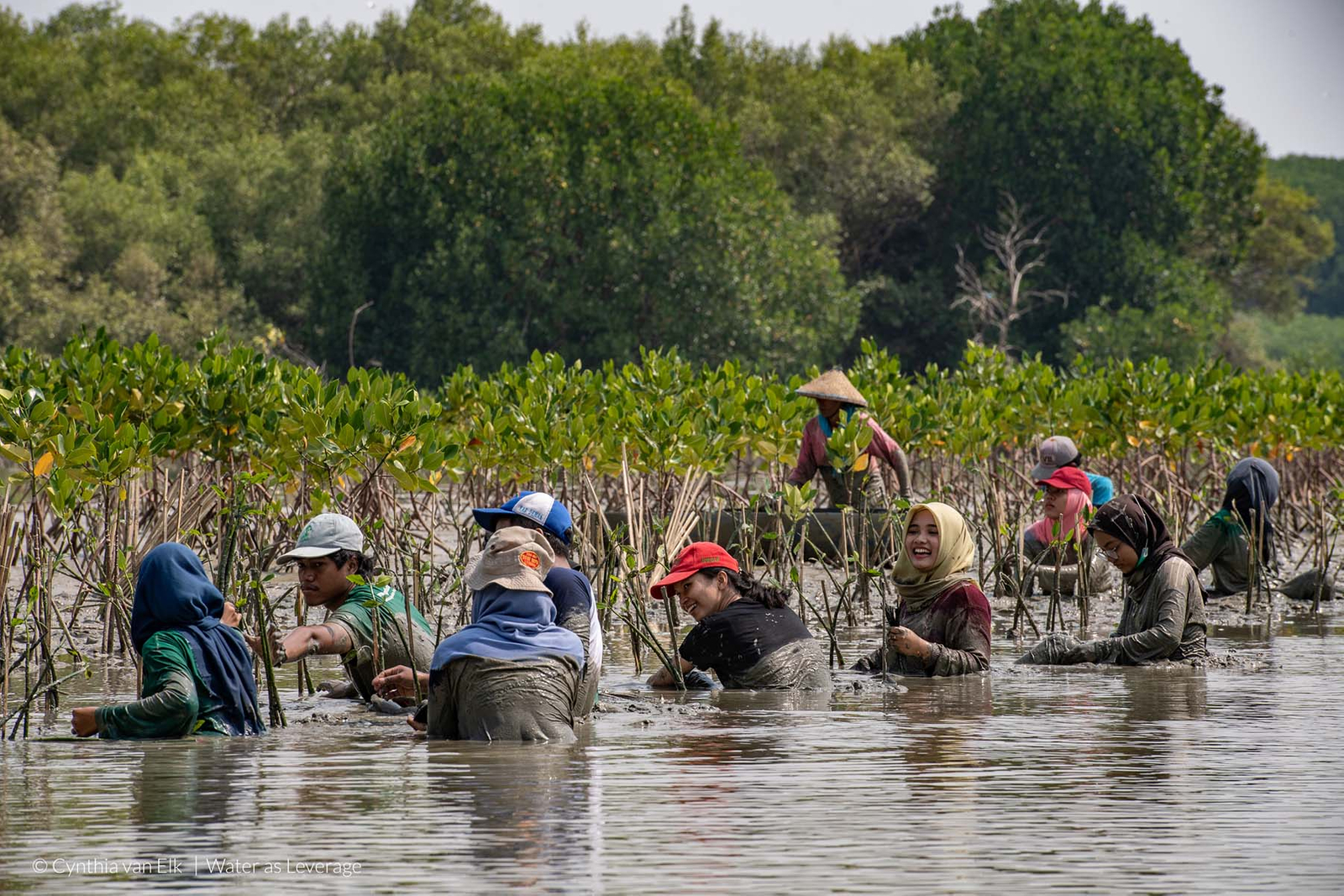
Disappearing mangrove forests resulted in further coastal erosion and with that the Semarang shore lost its natural protection. Mangroves are of paramount importance, not in the least for their water filtering qualities, but more for stabilizing sediments and breaking waves.
Local organisations have taken initiatives to restore the forests by planting mangrove saplings. While some attempts are successful, it is disconcerting to see that land subsidence and flooding often happen too fast for the seedlings to grow roots.
In Demak climate change is not a phenomenon of the future. Here climate change is a reality experienced on a daily basis, besides problems caused by poor urban planning.






Member discussion